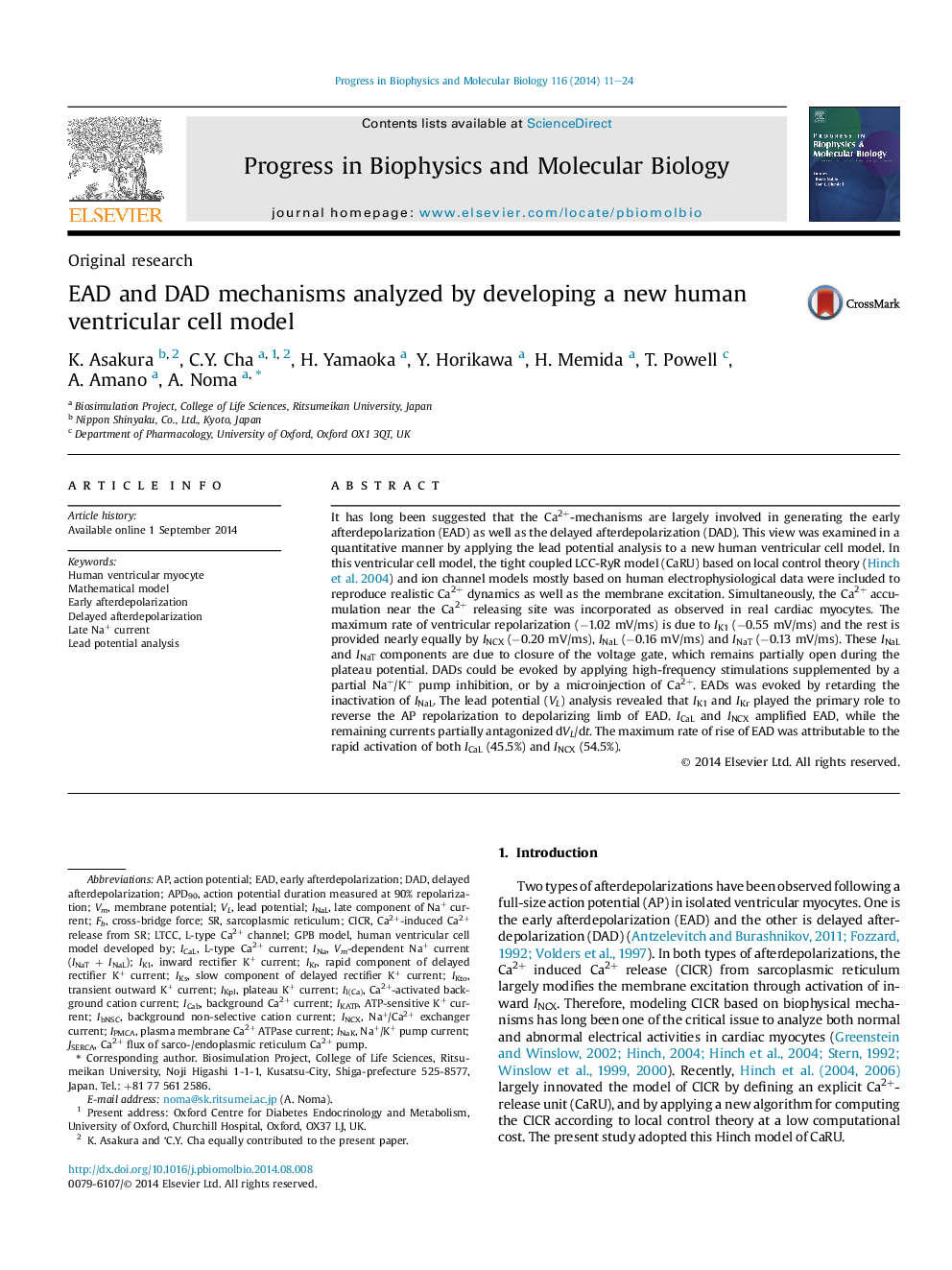| کد مقاله | کد نشریه | سال انتشار | مقاله انگلیسی | نسخه تمام متن |
|---|---|---|---|---|
| 2070529 | 1078499 | 2014 | 14 صفحه PDF | دانلود رایگان |

It has long been suggested that the Ca2+-mechanisms are largely involved in generating the early afterdepolarization (EAD) as well as the delayed afterdepolarization (DAD). This view was examined in a quantitative manner by applying the lead potential analysis to a new human ventricular cell model. In this ventricular cell model, the tight coupled LCC-RyR model (CaRU) based on local control theory (Hinch et al. 2004) and ion channel models mostly based on human electrophysiological data were included to reproduce realistic Ca2+ dynamics as well as the membrane excitation. Simultaneously, the Ca2+ accumulation near the Ca2+ releasing site was incorporated as observed in real cardiac myocytes. The maximum rate of ventricular repolarization (−1.02 mV/ms) is due to IK1 (−0.55 mV/ms) and the rest is provided nearly equally by INCX (−0.20 mV/ms), INaL (−0.16 mV/ms) and INaT (−0.13 mV/ms). These INaL and INaT components are due to closure of the voltage gate, which remains partially open during the plateau potential. DADs could be evoked by applying high-frequency stimulations supplemented by a partial Na+/K+ pump inhibition, or by a microinjection of Ca2+. EADs was evoked by retarding the inactivation of INaL. The lead potential (VL) analysis revealed that IK1 and IKr played the primary role to reverse the AP repolarization to depolarizing limb of EAD. ICaL and INCX amplified EAD, while the remaining currents partially antagonized dVL/dt. The maximum rate of rise of EAD was attributable to the rapid activation of both ICaL (45.5%) and INCX (54.5%).
Journal: Progress in Biophysics and Molecular Biology - Volume 116, Issue 1, September 2014, Pages 11–24